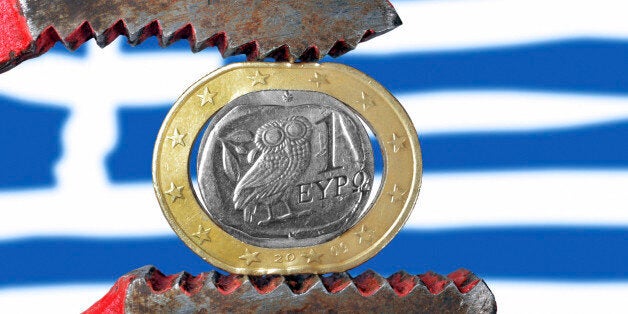
Europe's lingering economic troubles are at the center of global attention. Can the European Central Bank print enough money to jump-start the continent's economy? Or should that be done through a blast of public investment financed with yet more accumulation of debt? How should Greece be helped? What does the sudden appreciation of the Swiss franc mean for the Eurozone? Will Russia's financial distress spill over to its neighbors? How those questions are answered will affect some of the world's richest countries -- the likes of France, Germany, and Italy. Usually ignored, it will also affect some of the poorest.
Take the 34 economies currently classified by the World Bank as "Low Income Countries" -- "LICs" in development parlance. They are home to 850 million people whose combined GDP is smaller than Switzerland's (population: 8 million). Half of these people live in state of extreme poverty with less than $1.25 a day. What happens to them may not matter economically to Europe; but what happens in Europe matters a great deal to them.
The LICs' exposure to Europe comes through four channels -- trade, remittances, aid, and finance. A third of Bangladesh's and Mozambique's exports, and half of Madagascar's, go to Europe. The average LIC sells almost as much to Europe as it does to China -- its largest customer. But China itself is slowing down, after a binge of infrastructure construction that left its provinces and counties three trillion dollars in debt -- a lesson that policy-makers in Brussels should heed as they look for ways to restart growth.
Each year, migrants from some of the smallest LICs work in Europe and send money home. The amounts may sound insignificant in London or Paris, but they are huge for Gambia and Togo -- around three percent of their GDP, roughly equivalent to what their governments spend on healthcare. Research has shown that remittances are surprisingly resilient to the vagaries of the host economies -- migrants prefer to tighten their own belts rather than cut transfers to their families. But, after six years of stagnation, how long before the flow of remittances from Europe to the LICs begins to dry up?
What shouldn't dry up is foreign aid. Since the global financial crisis erupted in 2008-09, the members of the European Union have not drastically cut their aid budgets as percent of their GDP, even when they have been forced by the recession to cut public services to their own citizens. They deserve credit for that. The problem is that, as their GDP shrinks, the value of their donations shrinks too. This can hurt countries like Liberia, where European aid pays for more than half of all public expenditures.
And then there is finance. As the Euro loses value, many LICs have had to recalibrate their borrowing strategies. Think of the 14 west and central African countries whose common currency -- the "CFA franc" -- is pegged to the Euro. As their currency depreciates, their exports become more competitive. But their debts, which are almost entirely denominated in US dollars, become more difficult to service. Fortunately, over the past ten years or so, the public debts of many LICs were forgiven -- by, among others, European governments. Still, a typical LIC carries today a stock of public external debt worth a quarter of its GDP -- not trivial when you have children in need of food, schooling, or vaccination. Data on private financing for LICs is sketchier, but we know that European firms implement four of every ten new investment projects in Africa, a proportion that has not changed much over the past five years. One hopes they can keep their nerves.
Overall, the LICs' exposure to Europe is major but, so far, manageable. This, of course, assumes that the European Union remains a functioning single market with a common currency. The alternative -- with one or more members facing sovereign debt defaults, bans on capital outflows, controls on imports, and bursts of xenophobia -- would spread uncertainty and pain well beyond its borders. The world's poorest nations have an interest in a united, stable, and prosperous Europe.
